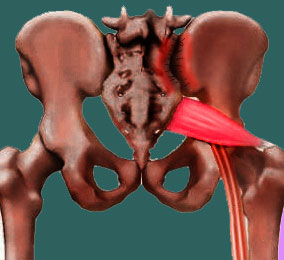
Rheumatoid arthritis sacroiliac pain problems can become functionally limiting and even debilitating, forcing patients to retreat from an active lifestyle and spend most of their time in bed. RA is a pathological form of autoimmune arthritis where in the body literally attacks itself, causing inflammation and terrible trauma to the joints of the spine, hip, shoulder, hand, wrist and sacroiliac, among other notable locations.
Unlike universally experienced osteoarthritis, the rheumatoid variant is never innocent and can become a threat to life itself. However, rheumatoid arthritis can also be treated, while osteoarthritis is unstoppable as long as life endures. In this essay, we will cover some innovative treatments for rheumatoid arthritis that many patients still have not tried.
This dialog provides a comprehensive view of RA in the sacroiliac joint. We will cover the causes of rheumatoid arthritis, its terrible symptoms and the best ways to treat the condition once it is established.
Causes of Rheumatoid Arthritis Sacroiliac Woes
RA is an autoimmune disorder and as such is poorly understood by traditional medical science. Many doctors have embraced the idea of psychogenic causation, with the disease acting as a substitute for traditional ischemic pain linked to the mindbody process. It is well known that mindbody disorders can certainly utilize the immune system to carry out their symptomatic imperatives.
Other doctors have focused on blaming bacterial, environmental contaminants, viral or other causes, although these theories have not received much support, since none seems to apply universally.
Many doctors believe that susceptibility to the condition might be hardwired into the genetic code, yet no definitive evidence of this speculation has been produced in objective research.
So far, the best and most universal source of symptoms seems to point to the mindbody interactions commencing the disease as a distraction and defense mechanism
Symptoms of Rheumatoid Arthritis SIJ Problems
The symptoms of RA are many and varied. In the sacroiliac joint, the disease might case instability or natural fusion of the joint. Many patients suffer pain, particularly when mobilizing the joint, such as when bearing weight, walking or exercising. Stiffness and /or weakness are commonly experienced, as well.
RA might produce obvious trauma to the sacroiliac joint, as well as to other joints in the body. This damage is often visualized externally as inflammation or a knurled appearance from bony spur formations. Visual changes associated with RA might be transient or permanent. Rheumatoid nodules might form around joints or in the internal organs.
Problematic skin conditions and ulcers are commonly observed near sites of rheumatic activity on the anatomy.
The internal organs might suffer attack and the development of RA nodules. The most frequent sites of these attacks include the kidneys, heart and lungs. Dysfunction of these organs is commonplace and might dispose a patient towards breathing difficulties, heart attack, high blood pressure, kidney failure and other dire health consequences.
Patients often have a history and future disposition towards other chronic pain problems.
Rheumatoid Arthritis Sacroiliac Treatment
RA is treated with a potent cocktail of drugs that typically has several goals in mind. Some drugs will control pain, usually being opioid analgesics. Other drugs will suppress the immune system, hoping to slow or halt progression of symptoms to other parts of the body. DMARDS work specifically on RA, helping to curb progression of the disorder, as well.
Physical therapy is widely used in an effort to preserve functionality. Even when exercise is painful, patients are encouraged to mobilize their bodies, since fitness pastimes tend to slow the condition from progressing and even help to prevent disability in many instances. Nonimpact activities are preferred, with swimming being a major beneficial activity for many RA patients.
Chiropractic and massage might help to bring temporary relief for symptoms in the spine and in the soft tissues surrounding affected joints. Acupuncture can certainly provide pain relieving benefits for many patients.
Knowledge therapy has demonstrated proven efficacy for not only slowing the progression of rheumatoid arthritis, but also for sending many cases into remission and allowing the body to heal. Since RA is an autoimmune disease, it is logical that a therapy which seeks to intervene through the subconscious mind would be helpful, since this region of the mind also regulates immune response and is therefore most likely to be the underlying origin of symptomatic activity.
Sacroiliac Joint Pain > Sacroiliitis > Rheumatoid Arthritis Sacroiliac





